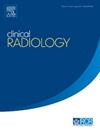Preoperative prediction of muscle invasion in bladder cancer in the Indian population using the Vesical Imaging-Reporting and Data System (VI-RADS) score and individual multiparametric magnetic resonance imaging (MRI) characteristics
IF 2.1
3区 医学
Q2 RADIOLOGY, NUCLEAR MEDICINE & MEDICAL IMAGING
引用次数: 0
Abstract
Aim
This study aimed to prospectively validate the Vesical Imaging-Reporting and Data System (VI-RADS) score in the preoperative prediction of muscle invasion in bladder cancer in the Indian population.
Materials and Methods
The study prospectively reviewed patients with bladder masses who underwent 1.5T multiparametric magnetic resonance imaging between December 2018 and April 2023. Clinical and pathological data were collected, and bladder tumors were evaluated using a 5-point VI-RADS scoring system. Independent measurements of quantitative parameters (maximum tumor diameter [DMax] and tumor contact length [TCL]) were performed. These parameters and VI-RADS scores were compared to postoperative pathology to assess muscle invasion. Sensitivity, specificity, positive predictive value (PPV), and negative predictive value (NPV) were calculated using a cutoff score of 4. Receiver Operating Characteristic (ROC) analysis evaluated the diagnostic performance of quantitative values.
Results
A total of 55 patients were included in the analysis, of whom 36 were non–muscle invasive and 19 were muscle invasive on the final histopathological report. A VI-RADS score of ≥4 as the cutoff for muscle invasion yielded a sensitivity and specificity of 94.7% (95% CI 72.7%–99.9%) and 97.2% (95% CI 85%–99.9%), with PPV and NPV value of 94.7% and 97.2%, respectively. The receiver operating curve showed an area under the curve (AUC) of 0.958 (95% CI 0.89-1.0). The AUC of TCL and TCL/DMax values for muscle invasion were 0.811 and 0.835, respectively.
Conclusions
The VI-RADS scoring system, qualitative parameters, as well as the TCL and TCL/Dmax exhibits a strong correlation with pathological staging, indicating to be an effective method for the preoperative determination of muscle invasion in bladder cancer.
利用膀胱成像报告和数据系统(VI-RADS)评分和个体多参数磁共振成像(MRI)特征预测印度人群膀胱癌的肌肉侵袭
目的本研究旨在前瞻性验证膀胱成像报告和数据系统(VI-RADS)评分在印度人群膀胱癌肌肉侵袭的术前预测中的作用。材料与方法本研究前瞻性回顾了2018年12月至2023年4月期间接受1.5T多参数磁共振成像的膀胱肿块患者。收集临床和病理资料,采用5分VI-RADS评分系统对膀胱肿瘤进行评估。独立测量定量参数(最大肿瘤直径[DMax]和肿瘤接触长度[TCL])。将这些参数和VI-RADS评分与术后病理进行比较,以评估肌肉侵犯。敏感度、特异性、阳性预测值(PPV)和阴性预测值(NPV)采用临界值4计算。受试者工作特征(ROC)分析评价定量值的诊断效能。结果共纳入55例患者,其中36例无肌创,19例最终组织病理报告为肌创。VI-RADS评分≥4分作为肌肉侵犯的临界值,其敏感性和特异性分别为94.7% (95% CI 72.7%-99.9%)和97.2% (95% CI 85%-99.9%), PPV和NPV值分别为94.7%和97.2%。受试者工作曲线曲线下面积(AUC)为0.958 (95% CI 0.89-1.0)。肌侵TCL的AUC和TCL/DMax分别为0.811和0.835。结论VI-RADS评分系统、定性参数以及TCL和TCL/Dmax与病理分期有较强的相关性,可作为膀胱癌术前判断肌肉浸润的有效方法。
本文章由计算机程序翻译,如有差异,请以英文原文为准。
求助全文
约1分钟内获得全文
求助全文
来源期刊

Clinical radiology
医学-核医学
CiteScore
4.70
自引率
3.80%
发文量
528
审稿时长
76 days
期刊介绍:
Clinical Radiology is published by Elsevier on behalf of The Royal College of Radiologists. Clinical Radiology is an International Journal bringing you original research, editorials and review articles on all aspects of diagnostic imaging, including:
• Computed tomography
• Magnetic resonance imaging
• Ultrasonography
• Digital radiology
• Interventional radiology
• Radiography
• Nuclear medicine
Papers on radiological protection, quality assurance, audit in radiology and matters relating to radiological training and education are also included. In addition, each issue contains correspondence, book reviews and notices of forthcoming events.
 求助内容:
求助内容: 应助结果提醒方式:
应助结果提醒方式:


